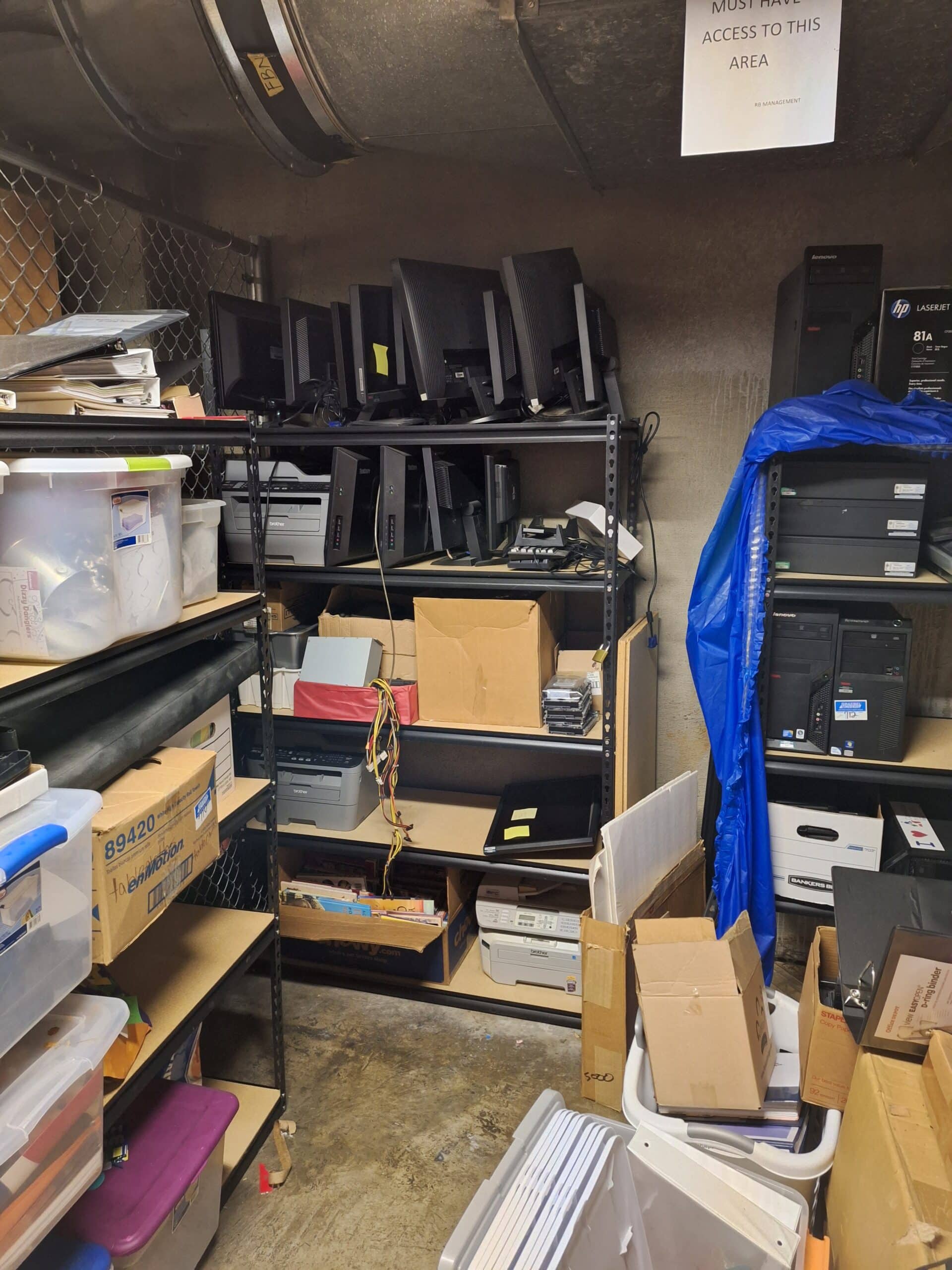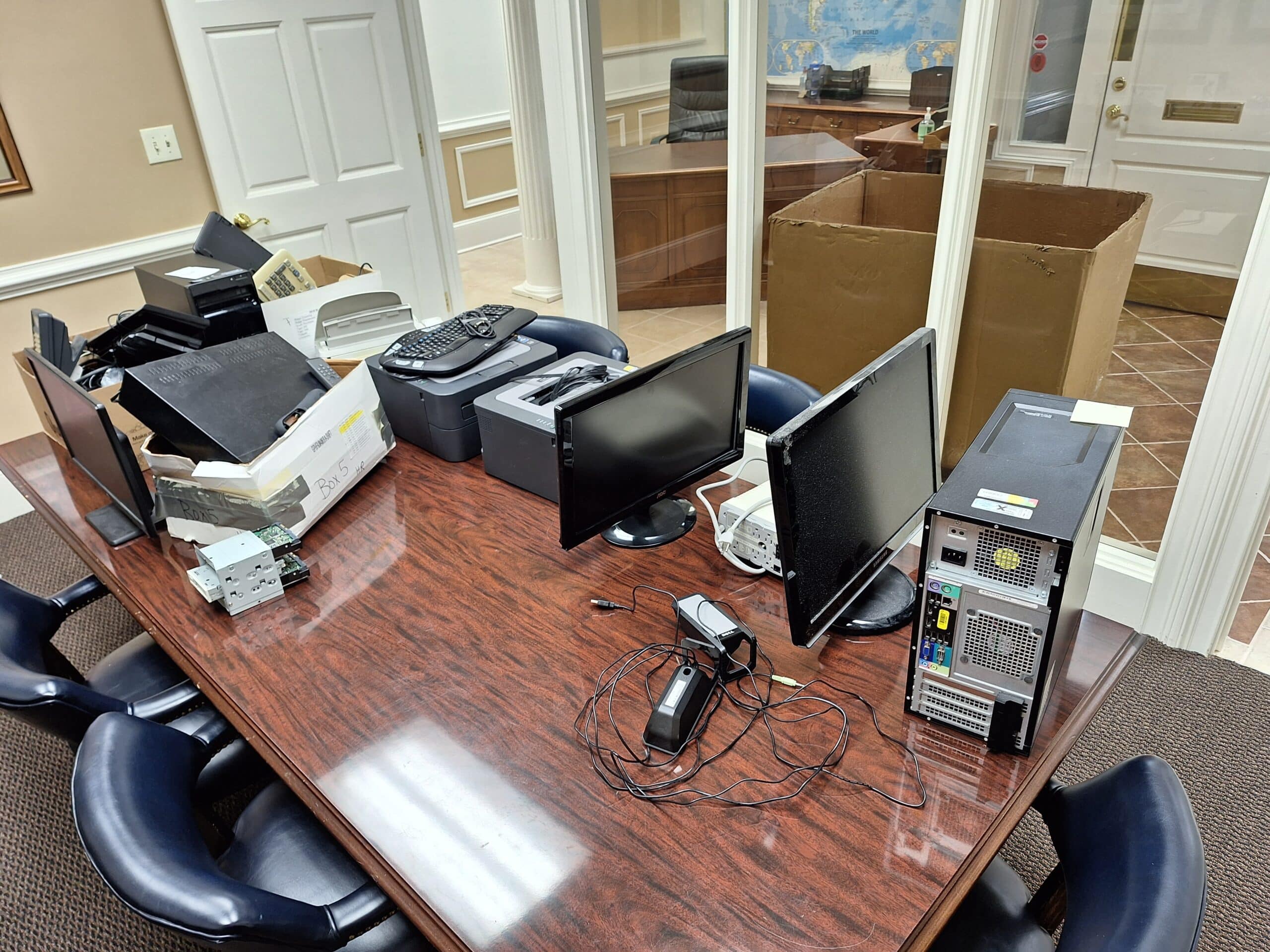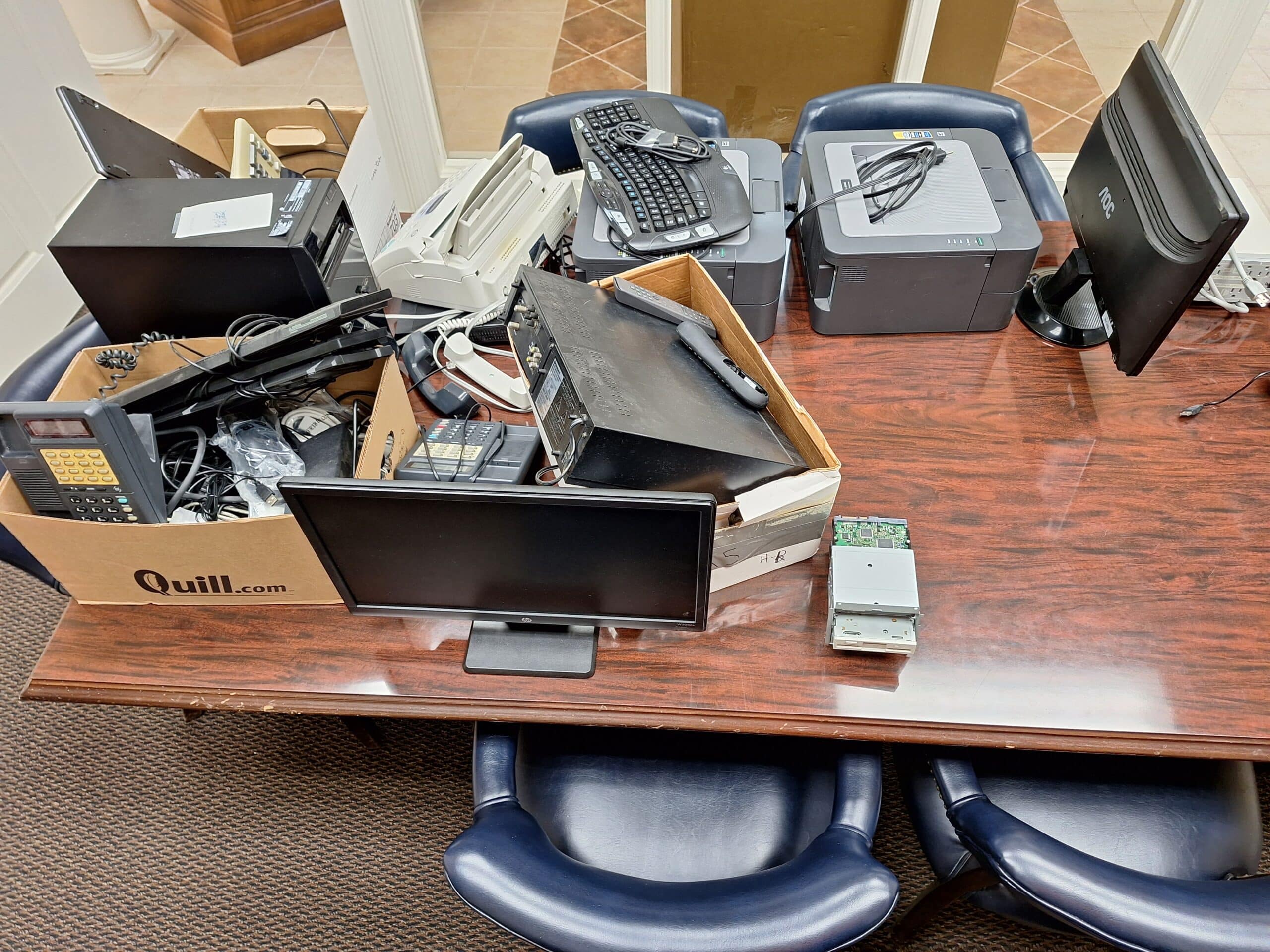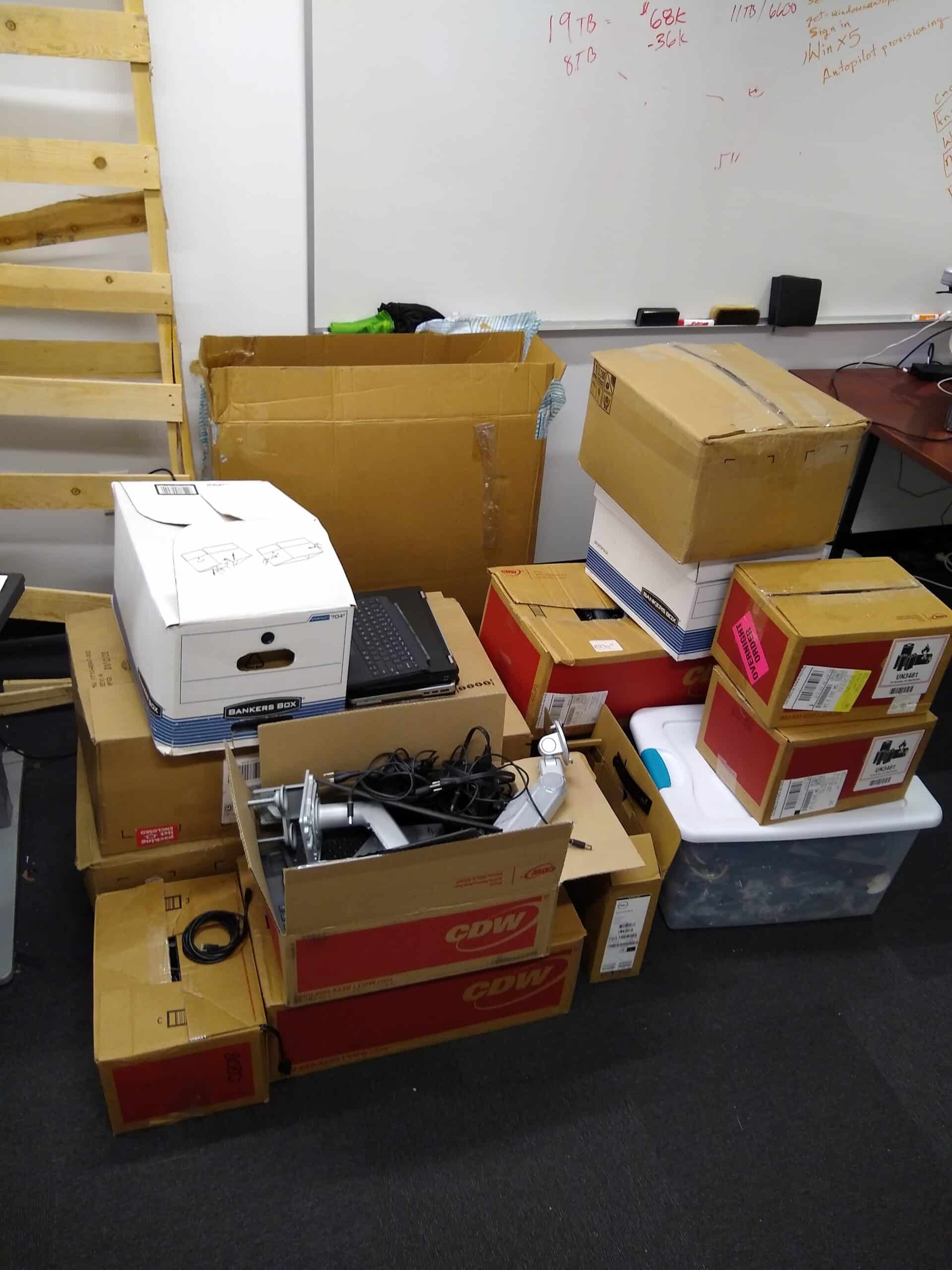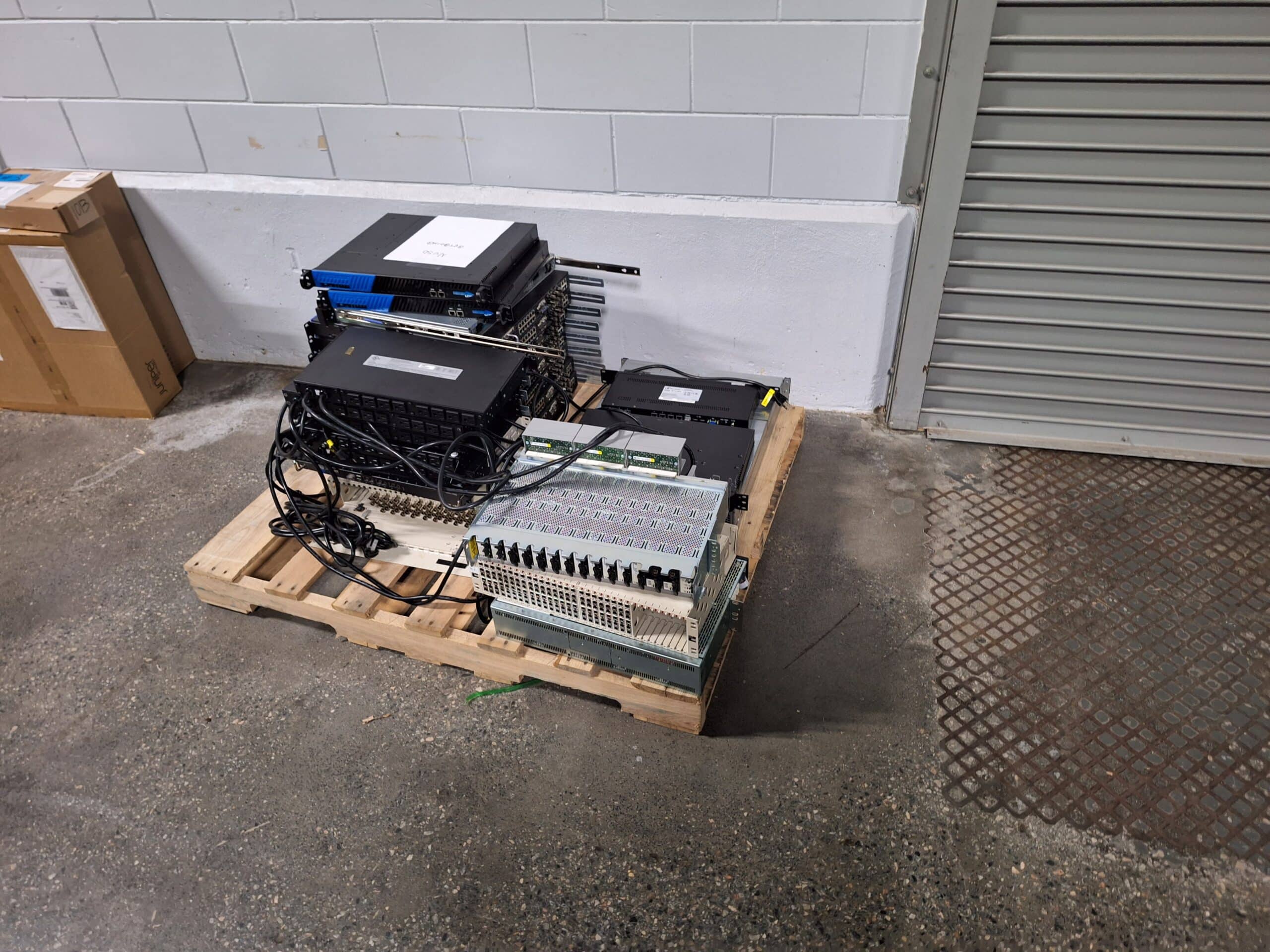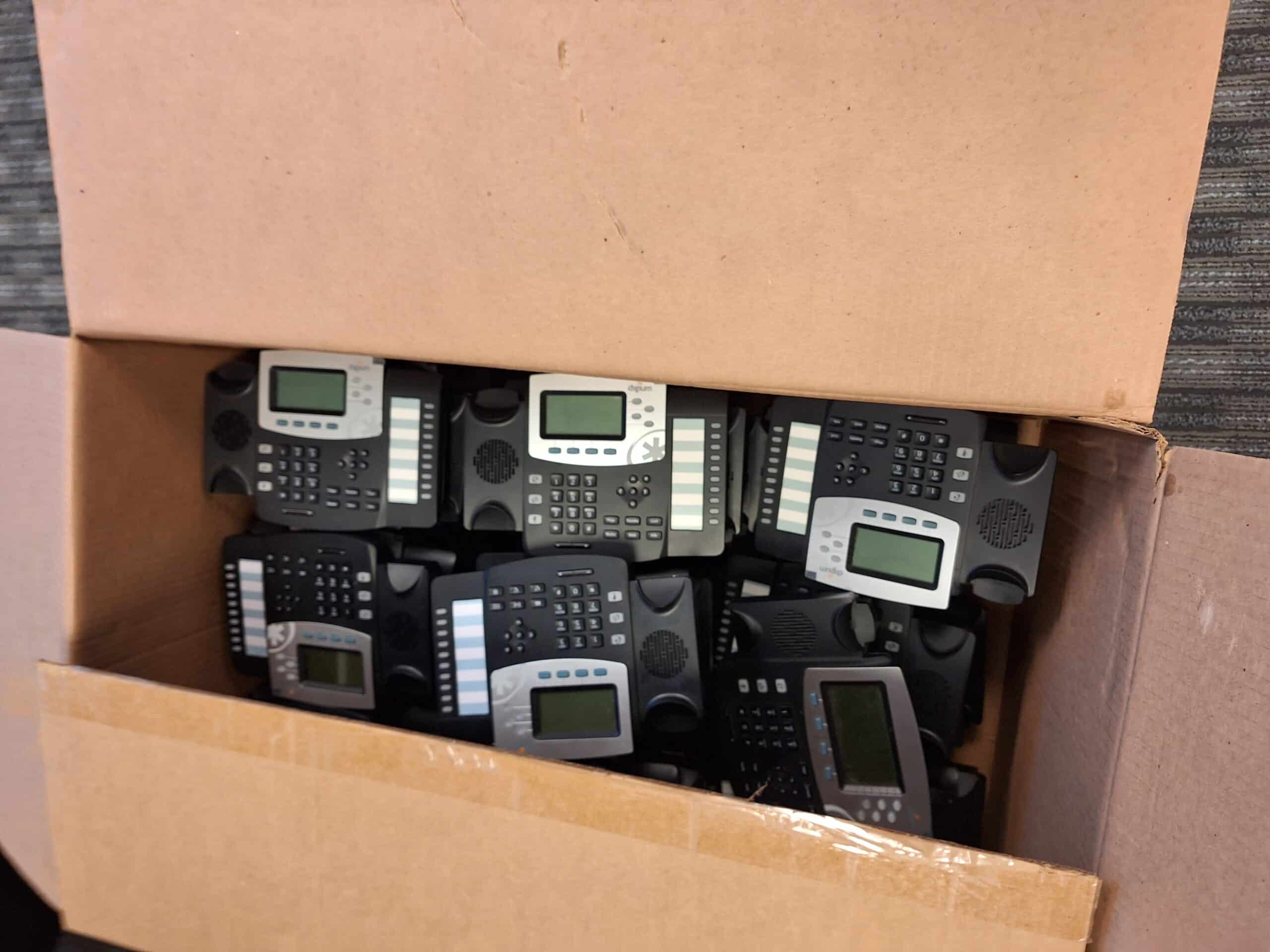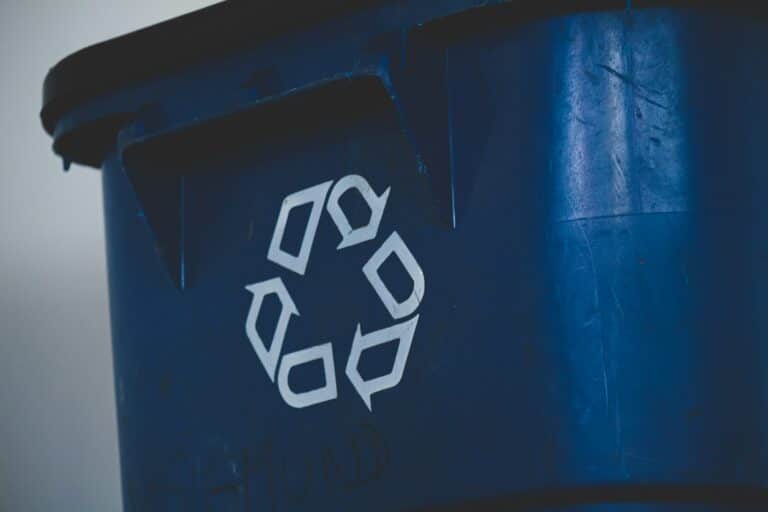Atlanta Green Computing for businesses & residents in atlanta.
Atlanta Green Computing
Atlanta Green computing or green IT, refers to environmentally sustainable computing or IT. In the article Harnessing Green IT: Principles and Practices, San Murugesan defines the field of green computing as “the study and practice of designing, manufacturing, using, and disposing of computers, servers, and associated subsystems—such as monitors, printers, storage devices, and networking and communications systems—efficiently and effectively with minimal or no impact on the environment.
The goals of green computing are similar to green chemistry; reduce the use of hazardous materials, maximize energy efficiency during the product’s lifetime, and promote the recyclability or biodegradability of defunct products and factory waste. Research continues into key areas such as making the use of computers as energy-efficient as possible, and designing algorithms and systems for efficiency-related computer technologies.
Call 404-905-8235 If You Have Questions
In 1992, the U.S. Environmental Protection Agency launched Energy Star, a voluntary labeling program which is designed to promote and recognize energy-efficiency in monitors, climate control equipment, and other technologies. This resulted in the widespread adoption of sleep mode among consumer electronics.
The term “green computing” was probably coined shortly after the Energy Star program began; there are several USENET posts dating back to 1992 which use the term in this manner. Concurrently, the Swedish organization TCO Development launched the TCO Certification program to promote low magnetic and electrical emissions from CRT-based computer displays; this program was later expanded to include criteria on energy consumption, ergonomics, and the use of hazardous materials in construction.
Regulations and industry initiatives
The Organization for Economic Co-operation and Development (OECD) has published a survey of over 90 government and industry initiatives on “Green ICTs”, i.e. information and communication technologies, the environment and climate change. The report concludes that initiatives tend to concentrate on the greening ICTs themselves rather than on their actual implementation to tackle global warming and environmental degradation. In general, only 20% of initiatives have measurable targets, with government programs tending to include targets more frequently than business associations.
Government
Many governmental agencies have continued to implement standards and regulations that encourage green computing. The Energy Star program was revised in October 2006 to include stricter efficiency requirements for computer equipment, along with a tiered ranking system for approved products.
Some efforts place responsibility on the manufacturer to dispose of the equipment themselves after it is no longer needed; this is called the extended producer responsibility model. The European Union’s directives 2002/95/EC (Restriction of Hazardous Substances Directive), on the reduction of hazardous substances, and 2002/96/EC (Waste Electrical and Electronic Equipment Directive) on waste electrical and electronic equipment required the substitution of heavy metals and flame retardants like Polybrominated biphenyl and Polybrominated diphenyl ethers in all electronic equipment put on the market starting on July 1, 2006. The directives placed responsibility on manufacturers for the gathering and recycling of old equipment.
There are currently 26 US states that have established state-wide recycling programs for obsolete computers and consumer electronics equipment. The statutes either impose an “advance recovery fee” for each unit sold at retail, or require the manufacturers to reclaim the equipment at disposal.
In 2010 the American Recovery and Reinvestment Act (ARRA) was signed into legislation by President Obama. The bill allocated over $90 billion to be invested in green initiatives (renewable energy, smart grids, energy efficiency, etc.) In January 2010, the U.S. Energy Department granted $47 million of the ARRA money towards projects that aim to improve the energy efficiency of data centers. The projects will provide research on the following three areas: optimize data center hardware and software, improve power supply chain, and data center cooling technologies.
Industry
Climate Savers Computing Initiative (CSCI) is an effort to reduce the electric power consumption of PCs in active and inactive states. The CSCI provides a catalog of green products from its member organizations, and information for reducing PC power consumption. It was started on 2007-06-12. The name stems from the World Wildlife Fund’s Climate Savers program, which was launched in 1999. The WWF is also a member of the Computing Initiative.
The Green Electronics Council offers the Electronic Product Environmental Assessment Tool (EPEAT) to assist in the purchase of “greener” computing systems. The Council evaluates computing equipment on 51 criteria – 23 required and 28 optional – that measure a product’s efficiency and sustainability attributes. Products are rated Gold, Silver or Bronze depending on how many optional criteria they meet. On 2007-01-24, President George W. Bush issued Executive Order 13423, which requires all United States Federal agencies to use EPEAT when purchasing computer systems.
The Green Grid is a global consortium dedicated to advancing energy efficiency in data centers and business computing ecosystems. It was founded in February 2007 by several key companies in the industry – AMD, APC, Dell, HP, IBM, Intel, Microsoft, Rackable Systems, SprayCool, Sun Microsystems and VMware. The Green Grid has since grown to hundreds of members, including end users and government organizations, all focused on improving data center efficiency.
The Green500 list rates supercomputers by energy efficiency (megaflops/watt, encouraging a focus on efficiency rather than absolute performance. Green Comm Challenge is an organization that promotes the development of energy conservation technology and practices in the field of Information and Communications Technology (ICT).
The Transaction Processing Performance Council(TPC) Energy specification augments the existing TPC benchmarks by allowing for optional publications of energy metrics alongside their performance results.
The SPEC Power is the first industry standard benchmark that measures power consumption in relation to performance for server-class computers.
Approaches
In the article Harnessing Green IT: Principles and Practices, San Murugesan defines the field of green computing as “the study and practice of designing, manufacturing, using, and disposing of computers, servers, and associated subsystems—such as monitors, printers, storage devices, and networking and communications systems—efficiently and effectively with minimal or no impact on the environment.” Murugesan lays out four paths along which he believes the environmental effects of computing should be addressed: Green use, green disposal, green design, and green manufacturing. Green computing can also develop solutions that offer benefits by “aligning all IT processes and practices with the core principles of sustainability, which are to reduce, reuse, and recycle; and finding innovative ways to use IT in business processes to deliver sustainability benefits across the enterprise and beyond”.
Modern IT systems rely upon a complicated mix of people, networks and hardware; as such, a green computing initiative must cover all of these areas as well. A solution may also need to address end user satisfaction, management restructuring, regulatory compliance, and return on investment (ROI). There are also considerable fiscal motivations for companies to take control of their own power consumption; “of the power management tools available, one of the most powerful may still be simple, plain, common sense.”
Product longevity
Gartner maintains that the PC manufacturing process accounts for 70 % of the natural resources used in the life cycle of a PC. More recently, Fujitsu released a Life Cycle Assessment (LCA) of a desktop that show that manufacturing and end of life accounts for the majority of this laptop ecological footprint. Therefore, the biggest contribution to green computing usually is to prolong the equipment’s lifetime. Another report from Gartner recommends to “Look for product longevity, including upgradability and modularity.” For instance, manufacturing a new PC makes a far bigger ecological footprint than manufacturing a new RAM module to upgrade an existing one.
Software and deployment optimization
Algorithmic efficiency
The efficiency of algorithms has an impact on the amount of computer resources required for any given computing function and there are many efficiency trade-offs in writing programs. While algorithmic efficiency does not have as much impact as other approaches, it is still an important consideration. A study by a physicist at Harvard, estimated that the average Google search released 7 grams of carbon dioxide (CO2).However, Google disputes this figure, arguing instead that a typical search produces only 0.2 grams of CO2.More recently, an independent study by GreenIT.fr demonstrate that Windows 7 + Office 2010 require 70 times more memory (RAM) than Windows 98 + Office 2000 to write exactly the same text or send exactly the same e-mail than 10 years ago
Resource allocation
Algorithms can also be used to route data to data centers where electricity is less expensive. Researchers from MIT, Carnegie Mellon University, and Akamai have tested an energy allocation algorithm that successfully routes traffic to the location with the cheapest energy costs. The researchers project up to a 40 percent savings on energy costs if their proposed algorithm were to be deployed. Strictly speaking, this approach does not actually reduce the amount of energy being used; it only reduces the cost to the company using it. However, a similar strategy could be used to direct traffic to rely on energy that is produced in a more environmentally friendly or efficient way. A similar approach has also been used to cut energy usage by routing traffic away from data centers experiencing warm weather; this allows computers to be shut down to avoid using air conditioning.
Larger server centers are sometimes located where energy and land are inexpensive and readily available. Local availability of renewable energy, climate that allows outside air to be used for cooling, or locating them where the heat they produce may be used for other purposes could be factors in green siting decisions.
Virtualization
Computer virtualization refers to the abstraction of computer resources, such as the process of running two or more logical computer systems on one set of physical hardware. The concept originated with the IBM mainframe operating systems of the 1960s, but was commercialized for x86-compatible computers only in the 1990s. With virtualization, a system administrator could combine several physical systems into virtual machines on one single, powerful system, thereby unplugging the original hardware and reducing power and cooling consumption. Virtualization can assist in distributing work so that servers are either busy, or put in a low power sleep state. Several commercial companies and open-source projects now offer software packages to enable a transition to virtual computing. Intel Corporation and AMD have also built proprietary virtualization enhancements to the x86 instruction set into each of their CPU product lines, in order to facilitate virtualized computing.
Terminal servers
Terminal servers have also been used in green computing. When using the system, users at a terminal connect to a central server; all of the actual computing is done on the server, but the end user experiences the operating system on the terminal. These can be combined with thin clients, which use up to 1/8 the amount of energy of a normal workstation, resulting in a decrease of energy costs and consumption. There has been an increase in using terminal services with thin clients to create virtual labs. Examples of terminal server software include Terminal Services for Windows and the Linux Terminal Server Project (LTSP) for the Linux operating system.
Power management
The Advanced Configuration and Power Interface (ACPI), an open industry standard, allows an operating system to directly control the power-saving aspects of its underlying hardware. This allows a system to automatically turn off components such as monitors and hard drives after set periods of inactivity. In addition, a system may hibernate, where most components (including the CPU and the system RAM) are turned off. ACPI is a successor to an earlier Intel-Microsoft standard called Advanced Power Management, which allows a computer’s BIOS to control power management functions.
Some programs allow the user to manually adjust the voltages supplied to the CPU, which reduces both the amount of heat produced and electricity consumed. This process is called undervolting. Some CPUs can automatically undervolt the processor depending on the workload; this technology is called “SpeedStep” on Intel processors, “PowerNow!”/”Cool’n’Quiet” on AMD chips, LongHaul on VIA CPUs, and LongRun with Transmeta processors.
Data center power
Data centers, which have been criticized for its extraordinary high energy demand, are a primary focus for proponents of green computing. The federal government has set a minimum 10% reduction target for data center energy usage by 2011. With the aid of a self-styled ultra efficient evaporative cooling technology, Google Inc. has been able to reduce its energy consumption to 50% of that of the industry average.
Operating system support
The dominant desktop operating system, Microsoft Windows, has included limited PC power management features since Windows 95. These initially provided for stand-by (suspend-to-RAM) and a monitor low power state. Further iterations of Windows added hibernate (suspend-to-disk) and support for the ACPI standard. Windows 2000 was the first NT based operating system to include power management. This required major changes to the underlying operating system architecture and a new hardware driver model. Windows 2000 also introduced Group Policy, a technology which allowed administrators to centrally configure most Windows features. However, power management was not one of those features. This is probably because the power management settings design relied upon a connected set of per-user and per-machine binary registry values,effectively leaving it up to each user to configure their own power management settings.
This approach, which is not compatible with Windows Group Policy, was repeated in Windows XP. The reasons for this design decision by Microsoft are not known, and it has resulted in heavy criticism. Microsoft significantly improved this in Windows Vista by redesigning the power management system to allow basic configuration by Group Policy. The support offered is limited to a single per-computer policy. The most recent release, Windows 7 retains these limitations but does include refinements for more efficient user of operating system timers, processor power management, and display panel brightness. The most significant change in Windows 7 is in the user experience. The prominence of the default High Performance power plan has been reduced with the aim of encouraging users to save power.
There is a significant market in third-party PC power management software offering features beyond those present in the Windows operating system. Most products offer Active Directory integration and per-user/per-machine settings with the more advanced offering multiple power plans, scheduled power plans, anti-insomnia features and enterprise power usage reporting. Notable vendors include 1E NightWatchman. Data Synergy PowerMAN (Software), Faronics Power Save and Verdiem SURVEYOR.
Power supply
Desktop computer power supplies (PSUs) are generally 70–75% efficient, dissipating the remaining energy as heat. An industry initiative called 80 PLUS certifies PSUs that are at least 80% efficient; typically these models are drop-in replacements for older, less efficient PSUs of the same form factor. As of July 20, 2007, all new Energy Star 4.0-certified desktop PSUs must be at least 80% efficient.
Storage
Smaller form factor (e.g. 2.5 inch) hard disk drives often consume less power per gigabyte than physically larger drives. Unlike hard disk drives, solid-state drives store data in flash memory or DRAM. With no moving parts, power consumption may be reduced somewhat for low capacity flash based devices.
In a recent case study, Fusion-io, manufacturers of the world’s fastest Solid State Storage devices, managed to reduce the carbon footprint and operating costs of MySpace data centers by 80% while increasing performance speeds beyond that which had been attainable via multiple hard disk drives in Raid 0. In response, MySpace was able to permanently retire several of their servers, including all their heavy-load servers, further reducing their carbon footprint.
As hard drive prices have fallen, storage farms have tended to increase in capacity to make more data available online. This includes archival and backup data that would formerly have been saved on tape or other offline storage. The increase in online storage has increased power consumption. Reducing the power consumed by large storage arrays, while still providing the benefits of online storage, is a subject of ongoing research.
Video card
A fast GPU may be the largest power consumer in a computer.
Energy efficient display options include:
No video card – use a shared terminal, shared thin client, or desktop sharing software if display required.
Use motherboard video output – typically low 3D performance and low power.
Select a GPU based on low idle power, average wattage or performance per watt.
CRT monitors typically use more power than LCD monitors. They also contain significant amounts of lead. LCD monitors typically use a cold-cathode fluorescent bulb to provide light for the display. Some newer displays use an array of light-emitting diodes (LEDs) in place of the fluorescent bulb, which reduces the amount of electricity used by the display. Fluorescent back-lights also contain mercury, whereas LED back-lights do not.
Materials recycling
Recycling computing equipment can keep harmful materials such as lead, mercury, and hexavalent chromium out of landfills, and can also replace equipment that otherwise would need to be manufactured, saving further energy and emissions. Computer systems that have outlived their particular function can be re-purposed, or donated to various charities and non-profit organizations. However, many charities have recently imposed minimum system requirements for donated equipment. Additionally, parts from outdated systems may be salvaged and recycled through certain retail outlets and municipal or private recycling centers. Computing supplies, such as printer cartridges, paper, and batteries may be recycled as well.
A drawback to many of these schemes is that computers gathered through recycling drives are often shipped to developing countries where environmental standards are less strict than in North America and Europe. The Silicon Valley Toxics Coalition estimates that 80% of the post-consumer e-waste collected for recycling is shipped abroad to countries such as China and Pakistan.
a
Unfortunately, in 2011, the collection rate of e-waste is still very low, even in the most ecologically advanced countries like France. In this country, e-waste collection is still at a 14 % annual rate between electronic equipments sold and e-waste collected for 2006 to 2009.
The recycling of old computers raises an important privacy issue. The old storage devices still hold private information, such as emails, passwords and credit card numbers, which can be recovered simply by someone using software that is available freely on the Internet. Deletion of a file does not actually remove the file from the hard drive. Before recycling a computer, users should remove the hard drive, or hard drives if there is more than one, and physically destroy it or store it somewhere safe. There are some authorized hardware recycling companies to whom the computer may be given for recycling, and they typically sign a non-disclosure agreement.
Telecommuting
Teleconferencing and telepresence technologies are often implemented in green computing initiatives. The advantages are many; increased worker satisfaction, reduction of greenhouse gas emissions related to travel, and increased profit margins as a result of lower overhead costs for office space, heat, lighting, etc. The savings are significant; the average annual energy consumption for U.S. office buildings is over 23 kilowatt hours per square foot, with heat, air conditioning and lighting accounting for 70% of all energy consumed. Other related initiatives, such as hotelling, reduce the square footage per employee as workers reserve space only when they need it. Many types of jobs, such as sales, consulting, and field service, integrate well with this technique.
Voice over IP (VoIP) reduces the telephony wiring infrastructure by sharing the existing Ethernet copper. VoIP and phone extension mobility also made hot desking more practical.
City Of Atlanta Information
Learn More About Atlanta on Wikipedia.com
Open & Explore Atlanta Google Map on maps.google.com
Locate Nearby Atlanta Google pharmacies on google.com
Browse List of Atlanta public and private schools on GreatSchools.Org
View Current Atlanta weather report weather.com
